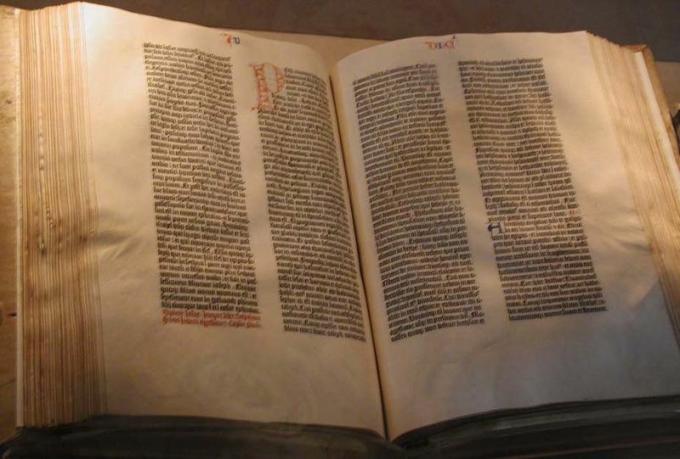
Johannes Gensfleisch Zur Laden, better known as Johannes Gutenberg He was born in Mainz, present-day Germany, in 1396.
see more
Discover the biography of Magda Soares and her main works
Who was Emmi Pikler? Discover its history and methodology

In his youth he was a goldsmith, cutter and mirror polisher, worked as a plate stamper, metalwork, and other handicrafts. Inspired by Laurens Janszoon Closter and Bi Sheng, he made the first attempt at printing with movable type in 1428.
In 1434, he set up a goldsmith's atelier in Strasbourg, in present-day France. Where, in addition to performing the role of goldsmith, he continued to work in parallel on his project to print the text in a mobile way. He had legal problems with other partners in the jewelery business and had to return to Mainz in 1448.
There, he founded a partnership with Johann Fust and Peter Schöffer and devoted himself full time to his greatest idea: the movable type printing press. This was formed by lead and tin molds for each character (types) that fit into a wooden press (prelo), adapted from a grape crusher.
Gothic style type was arranged in lines to create words, sentences, back paragraphs forward, then dipped in special paint, more viscous to adhere to the metal, and pressed into the paper.
In 1455 the first 120 copies of the 42-line, 1,282-page bible were successfully completed. The method was so efficient that it remained virtually unchanged until the 20th century.

When Gutenberg died in 1468, eight towns had movable type presses. The invention spread across Europe and enabled some of humanity's greatest revolutions.
Gutenberg's printing press reduced the cost of books which resulted in the popularization of reading and an increase in the literacy rate, which became known as the Printing Revolution. Without her, the Enlightenment, The scientific revolution, O renaissance, The Protestant Reformation and our modern economy, based on knowledge in mass learning, would be impossible.


